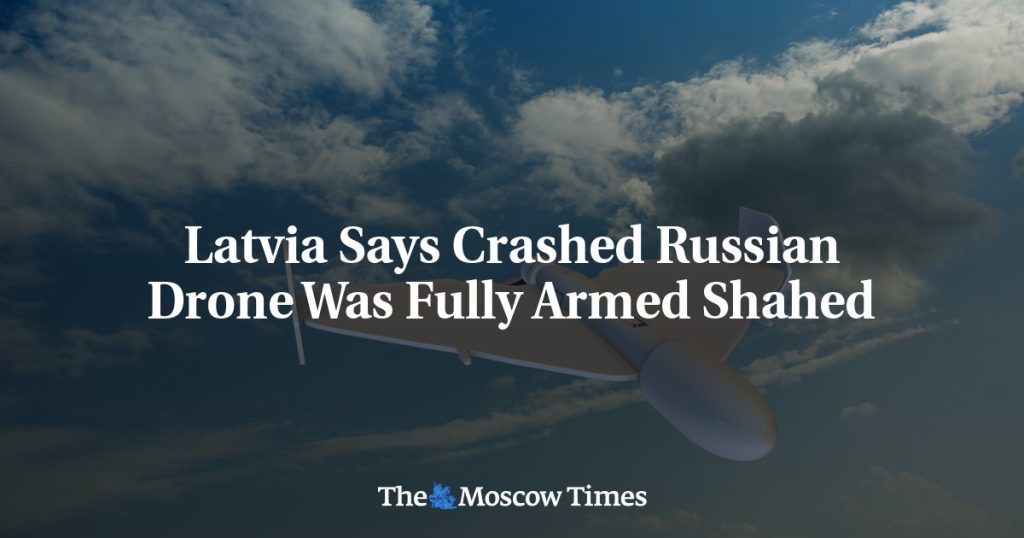Latvia’s armed forces confirmed that a Russian drone, designed by Iran, crashed on its territory. The drone, a Shahed model, was equipped with explosives, which were neutralized on the spot to avoid detonation. General Leonids Kalnins stated that military intelligence officers gathered debris from the drone for further investigation, which will be shared with NATO partners. The investigation is ongoing, and details about how and when the drone was deactivated were not disclosed at the press conference.
Latvian air force commander, Colonel Viesturs Masulis, clarified that the drone was not targeted at any military installation in the country but had drifted into Latvia’s airspace. The drone was initially detected while still in Belarusian airspace, giving Latvian air defenses time to respond. Defense Minister Andris Spruds highlighted that additional mobile anti-aircraft units had been deployed to Latvia’s borders in response to the incident. Latvian President Edgars Rinkevics expressed concerns about increased airspace violations along NATO’s eastern borders, with other member states reporting similar incidents involving Russian drones and missiles.
The incident in Latvia is part of a broader trend of airspace violations by Russian military assets in neighboring countries. Romania reported a Russian attack drone crossing its airspace to target civilian infrastructure in Ukraine, while Poland has documented multiple violations involving Russian missiles and drones attacking Ukraine. These incidents raise alarms among NATO members about the escalating tensions in the region and the need for heightened vigilance against potential threats. The violations further strain already tense relations between Russia and NATO, with the alliance expressing solidarity and support for its members facing security challenges.
The crash of the Russian drone in Latvia underscores the complex security situation in Eastern Europe, where historical tensions and recent conflicts have fueled instability. Latvia, once part of the Soviet Union, is now a member of both the EU and NATO, placing it at the forefront of geopolitical rivalries between Russia and Western alliances. The presence of Iranian-designed drones in Russian military operations adds another layer of complexity to the security landscape, highlighting the interconnected nature of modern conflicts and the diverse sources of military technology.
As Latvia investigates the origins and intentions behind the crashed drone, it reiterates its commitment to sharing information with NATO allies to strengthen collective security measures. The prompt neutralization of the explosives on the drone demonstrates the country’s readiness to respond to potential threats and protect its territory. The incident serves as a reminder of the ongoing challenges faced by Baltic states in maintaining their sovereignty and security amidst regional tensions. By collaborating with international partners and remaining vigilant against airspace violations, Latvia aims to deter further escalations and safeguard its borders.
In the face of increasing pressure and provocations from Russia, Latvia and other NATO members strive to uphold the principles of democratic governance, free journalism, and independent decision-making. The recent designation of The Moscow Times as an “undesirable” organization by Russian authorities underscores the broader crackdown on independent media and dissenting voices in the country. In this context, supporting open, unbiased journalism becomes crucial in promoting transparency and accountability in tackling security threats and geopolitical conflicts. The challenges posed by airspace violations and military activities in Eastern Europe require a collaborative and informed approach to ensure the safety and stability of the region.


